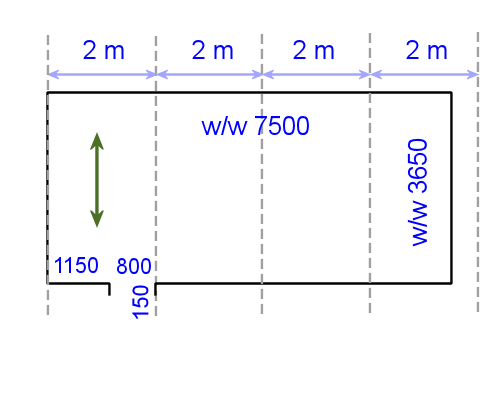Patterned sheet flooring
 Audio for slide 3 (mp3 |6|KB)
Audio for slide 3 (mp3 |6|KB)
Step 1: Calculate the length allowance for each run
If the seam runs across the width of the room and each run is 3650 mm, then the number of pattern repeats will be:
3650 ÷ 300 = 12.1
So we'll need to allow for 13 pattern repeats in order to start each run at the beginning of a pattern. This means that the length allowance is:
13 (pattern repeats) x 300 mm = 3900 mm
Because 3900 mm gives us plenty of allowance for the 150 mm return in the doorway, we don't need to add any extra for that run.

If the seam runs across the width of the room and each run is 3650 mm, then the number of pattern repeats will be:
3650 ÷ 300 = 12.1
So we'll need to allow for 13 pattern repeats in order to start each run at the beginning of a pattern. This means that the length allowance is:
13 (pattern repeats) x 300 mm = 3900 mm
Because 3900 mm gives us plenty of allowance for the 150 mm return in the doorway, we don't need to add any extra for that run.

Go to Allowing for angles

Industry Network Training and Assessment Resourses
© 2023 Workspace Training








